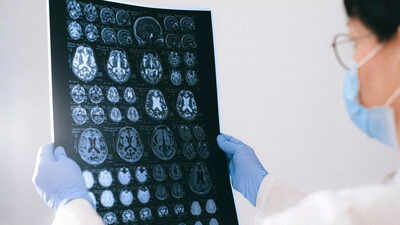Alzheimer’s disease is one of the most common causes of memory loss and cognitive decline in older adults. Yet, one fact has puzzled researchers for years — women make up nearly two-thirds of all Alzheimer’s cases worldwide. It has often been assumed that women’s longer life expectancy explains this difference. However, new findings suggest that there may be more to the story. Recent research into how men’s and women’s brains change with age reveals subtle but meaningful biological differences. These insights could help us understand why Alzheimer’s risk varies by sex and why prevention strategies might need to be tailored differently for men and women.
Subtle brain differences that emerge with age
A recent study published in PNAS examined brain scans from more than 4,700 healthy adults aged between 17 and 95. Researchers wanted to see whether brain ageing patterns differed between men and women and if those differences could help explain why Alzheimer’s is more common among women.
The study analysed over 12,000 brain MRI scans, tracking changes in brain volume, surface area, and thickness over time. The results showed that both men and women experience brain shrinkage as they age, but the patterns are not identical. Men tended to show greater decline in more brain regions, especially in areas related to memory and emotion such as the parahippocampal cortex. Women, on the other hand, had fewer areas of decline but showed more noticeable enlargement of brain ventricles, which are fluid-filled spaces.These results indicate that while men may experience faster brain tissue loss with age, women’s brains might be more vulnerable to other forms of change that influence Alzheimer’s development.
Why men and women age differently
Biological ageing affects men and women in distinct ways. The research found that men’s brains tend to show signs of faster structural ageing, similar to how men generally exhibit quicker overall biological ageing. Factors such as hormones, metabolic function, and epigenetic changes — which influence how genes are expressed — might play a part.Interestingly, even though men appear to lose brain tissue faster, women are still more likely to develop Alzheimer’s. This suggests that factors beyond physical brain shrinkage are at work. For instance, the study noted that when differences in life expectancy were taken into account, some of the male-specific patterns of brain ageing disappeared. This means that longevity may mask or exaggerate certain effects in studies that do not separate lifespan differences.Researchers also pointed out that women’s brains might experience unique hormonal shifts during menopause, affecting how the brain processes energy and clears toxins. These changes could make certain brain regions more susceptible to Alzheimer’s-related damage, even if overall atrophy is slower than in men.
What this means for Alzheimer’s risk
The study highlights that brain ageing and Alzheimer’s risk are not identical processes. In simple terms, a shrinking brain does not automatically mean a higher chance of Alzheimer’s. The researchers found that while men’s brains might decline more rapidly in structure, women’s brains could be more sensitive to the specific biochemical changes linked to the disease.One example is the APOE ε4 gene, which is known to increase Alzheimer’s risk. Previous research suggests that this gene may affect women more strongly, influencing how proteins like tau accumulate in the brain. Such molecular differences could explain why women’s risk remains higher even when structural decline is less severe.These findings show that Alzheimer’s is not solely about how much the brain shrinks but how it functions and responds to stress over time. Social and environmental factors may also contribute — for instance, women historically lived longer but had less access to education and healthcare, both of which play roles in long-term brain health.
The path forward for future research
While the findings from this large study provide valuable insight, researchers caution that there are still many unanswered questions. The sample, for instance, included participants who were generally healthier and more educated than the broader population, which could influence results. Also, since the study only looked at healthy adults, the patterns might differ in people already showing early symptoms of cognitive decline.Future studies need to explore not only structural brain changes but also how lifestyle, genetics, and hormonal factors interact over time. Scientists believe that focusing on biological and social factors together could give a clearer picture of why women are more often diagnosed with Alzheimer’s.Importantly, this growing understanding can shape how prevention and treatment strategies are developed. For example, lifestyle recommendations and medication responses could one day be personalised by sex, taking into account how men’s and women’s brains age differently.As researchers continue to unravel these complex interactions, one thing is becoming clearer — Alzheimer’s is not a one-size-fits-all disease. Its risks and mechanisms differ subtly but significantly between men and women. Recognising these distinctions is key to developing more effective ways to protect brain health as we age.Disclaimer: This article is for informational purposes only and should not be considered medical advice. Please consult a healthcare professional before making any changes to your diet, medication, or lifestyle.Also Read | What your feet say about your heart health: Doctors warn these hidden signs could be deadly

:max_bytes(150000):strip_icc()/Dietitians-Reveal-the-Habit-Women-Over-40-Should-Be-Doing-to-Lose-Weight-39e20c73699848e788e8d4216050e41d.jpg)

